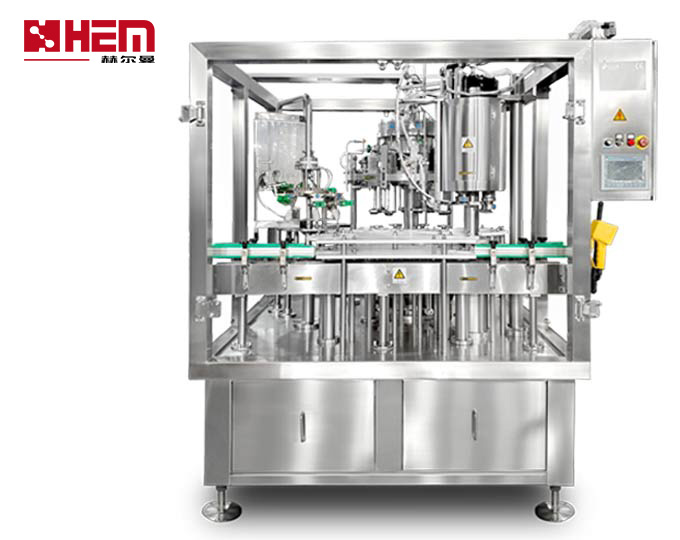product center
- ● Beer brewing equipment system
- --brewpub equipment
- --Industry brewery equipment
- --Micro-brewery equipment
- ● Beer filling system
- --Beer canning machine
- --Beer glass bottling machine
- --Beer kegging machine
- --PET Bottling machine
- ● Brewery corollary equipment
- ● Single tank
- --Bright Beer tank
- --CIP Unit
- --Fermentation tank
Brewers Association: 4% Craft Volume Growth ‘Likely’ in 2019
Craft brewers are on pace for another year of low single-digit growth, the Brewers Association announced today in its annual “The Year in Beer” review.
The not-for-profit trade organization representing small and independent U.S. craft breweries projects 2019 volume growth of 4%, down slightly from the 2018 number, which eventually settled at around 4%, or about 1 million barrels.
“All in all, I think we’re seeing a similar story and I think the whole narrative around growth will be similar, which is a steady growth rate, but real questions around if that’s enough growth to sustain the growing number of companies,” BA chief economist Bart Watson told Brewbound.
Another year of 4% volume growth amounts to about 1 million barrels or so of beer, although Watson cautioned that the numbers are not yet final.
“We really want to wait and see until we get the full number for the long tail [of small craft breweries],” he said. “One thing I’ll say is I think it’s harder to measure craft growth in real time than ever before with so many small breweries, and so much of their growth being made up of things that aren’t really being measured by any specific indicator other than final TTB [Alcohol and Tobacco Tax and Trade Bureau] numbers.”
Nevertheless, the similarities in recent years may suggest that craft is “settling into a more stable pattern in terms of growth, openings and closings,” Watson said.
Driving much of that growth are new, very small entrants to the craft segment. The BA said it is “certain” that a record number of breweries — more than 8,000 — operated at some point in the U.S. in 2019. However, the U.S. has yet to see 8,000 breweries operating simultaneously, Watson said.
“We’re approaching 8,000 but we have not hit 8,000 active yet,” he said.
As the number of breweries in operation has climbed, so has the number of closings. The BA estimated that a record 300 craft breweries will have closed their doors by the end of 2019.
In a Twitter thread last week, Watson noted that about a quarter of closed brewery locations get a new brewery in those former spaces. Watson added that he found 391 active breweries, nearly 23%, in locations where a brewery had closed. Nevertheless, a clear pattern has yet to develop.
“States with more breweries/more closures aren’t really more or less likely to re-use locations,” he wrote. “Same thing for cities. A few of the top cities do have higher rates of active breweries locating in places where breweries have closed.”
Speaking to Brewbound, Watson said this hermit crab phenomenon may point to both the increasingly competitive marketplace but also the breweries failing for “a variety of business reasons” unrelated to specific markets or locations. In fact, many popular craft beer cities showed a higher rate of breweries reopening in once-shuttered spaces, including Portland (24%), San Diego (37.5%), Seattle (28.6%) and Denver (36.4%), Watson wrote.
The BA also offered an update on its independent craft brewery seal, as more than 4,700 craft breweries have adopted the upside down bottle logo since its inception in June 2017. Those companies represent 80% of the craft beer produced in the U.S.
In Delaware, the state’s 21 craft breweries have all adopted the logo. Recall that Dogfish Head Craft Brewery prominently featured the symbol on its 60 Minute IPA packaging this year.
Another issue that is on the mind of craft brewers is the potential expiration of federal excise tax relief granted two years ago. Alcohol producers and importers are hoping Congress passes the Craft Beverage Modernization and Tax Reform Act into permanence, and the legislation now has the support of 324 cosponsors in the House of Representatives and 74 cosponsors in the Senate.
Looking ahead to 2020, Watson said it’s hard to predict where future growth may come from.
“I’m not ruling out that craft could find some new run room and some new green spaces, but it’s going to require some changes in what craft brewers do,” Watson said.
Those changes could come by attracting new demographics to the craft segment, launching new business models, adding ecommerce and direct-to-consumer sales opportunities similar to the wine industry. However, Watson admitted that predicting where “big chunks of growth” may come from in the current competitive marketplace is becoming increasingly difficult.
“In the other direction, in terms of potential downward pressures, we’ve seen that the taproom, brewpub, direct-at-the-brewery model has had good run room, but I think there’s going to be a logical point where that stops,” he added. “Only so much of the draft beer in the U.S. is going to go through brewpubs and taprooms. As excited as beer lovers are for those, they’re going to balance those against other options. So if and when that growth slows, that could be a real challenge. I’m not predicting that’s going to happen in 2020, but that’s certainly something watching for next year.”
 008653188825980
008653188825980












